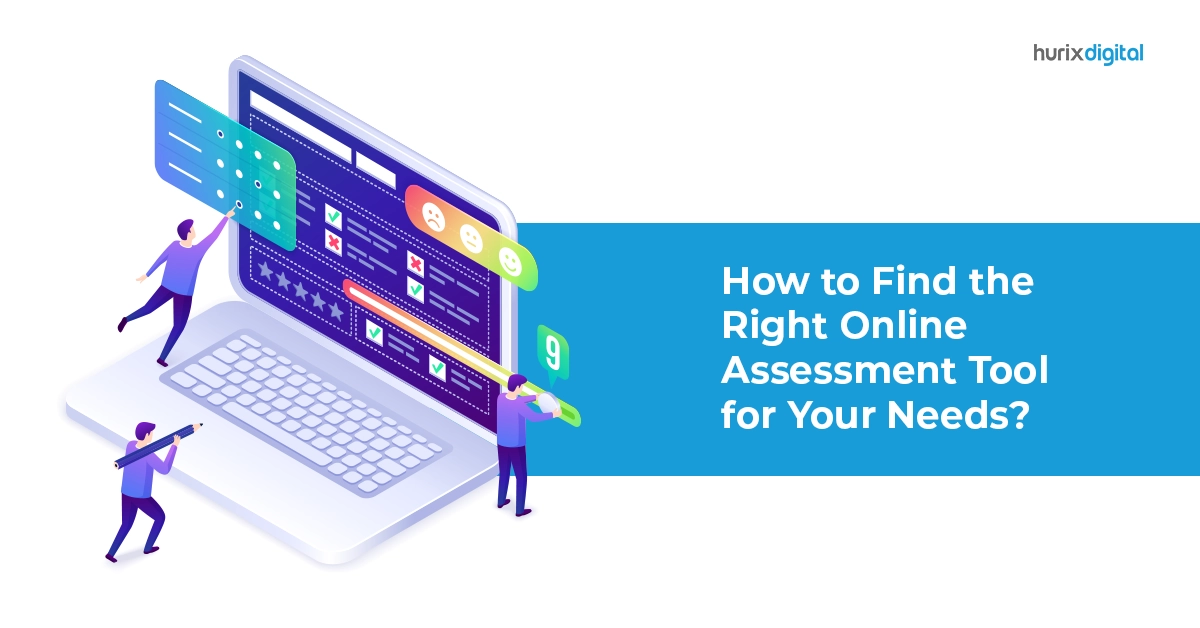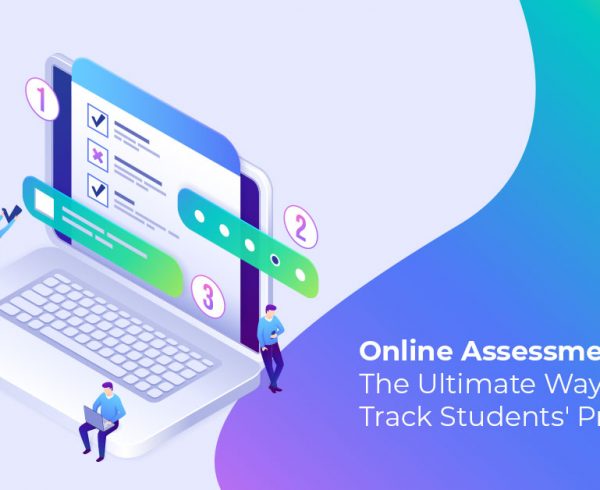Summary
This blog discusses the different types of assessments in higher education, their advantages, and the factors to consider when choosing the right online assessment services.
In today’s digital era, higher education studies are increasingly taking place online, with the global online education market projected to expand to a massive $239 billion by 2027.
This monumental shift to digital learning calls for more effective assessment methods, making online assessment test systems more important than ever. Gone are the days when pen-and-paper tests were an effective measure for evaluation.
This blog will explore the different types of online assessments, their advantages, and the factors to consider when choosing the right online assessment services.
Table of Contents:
- What Is an Online Assessment?
- Types of Assessment in Higher Education
- Advantages of Online Assessments
- How to Choose the Right Online Assessment Services?
- The End Note
What is an Online Assessment?
Online assessment is a means to digitally evaluate a student’s comprehension and mastery of a particular subject. It is also a measure to keep track of a student’s academic progress. Since the tests are available online, students only need a smart internet-connected device to take them.
Types of Assessment in Higher Education
From diagnostic to norm-referenced, there are several types of assessments at higher levels of education. Among them, the two main types are formative and summative assessments. Let’s better understand these assessments by discussing them in detail.
1. Formative Assessment
An ongoing evaluation of students’ progress, formative assessments enable teachers to test students’ knowledge about a subject from time to time. This helps them gain insight into the learning gaps and provide timely, actionable feedback to students. Feedback helps students understand the areas they lag in and guides them to overcome their mistakes/ misconceptions.
Some examples of formative assessment include:
- Short quizzes
- End-of-class polls
- Open-ended class discussions
- Concept maps
- Case studies
2. Summative Assessment
A summative assessment is a conclusive assessment that enables teachers to evaluate the complete degree of knowledge gained and the level of proficiency acquired in a particular subject by their students. By allowing teachers to gauge the mastery level against predetermined learning objectives, this type of assessment helps them assign grades to students.
Some examples of summative assessment include:
- End–of–term exams
- Group projects
- Standardized admission tests
- Presentations
- Formal essays
- Portfolios
Also Read: Gamified Assessments: Evaluating Learning Outcomes with Educational Video Games
Advantages of Online Assessments
Online assessments come with several benefits, such as:
- Convenience: Online assessments are highly convenient and flexible, as they can be attempted at any time, place, or smart device.
- Objective assessment rubrics: Online assessment tools can curate assessment rubrics according to your institution’s needs. They reduce subjectivity by providing clear evaluation criteria for tests.
- Store of question banks: Online assessment systems can store the previous years’ question papers, which teachers can easily access and use to make upcoming question papers.
- Provide exam notifications: Online assessment tests can send students and teachers notifications on emails and related platforms to inform them about the exam schedule.
- Automated grading and feedback: Online assessment software can automatically store the tests, grade them, and provide constructive feedback to students about their performance.
- Generate analytical reports: Online assessment platforms can generate analytical reports based on a student’s performance. Teachers can access and analyze these reports to tailor their teaching methods to students’ needs.
How to Choose the Right Online Assessment Services?
You need to consider some non-negotiable factors when looking for online assessment services/platforms.
1. User-Friendly Interface
A must-have feature when choosing online assessment services is an intuitive platform. A user-friendly interface enables teachers to create online tests easily and allows students to take them without difficulty. Thus, a good and intuitive interface saves valuable time and increases productivity.
2. Ability to Incorporate Multimedia Elements
The online assessment platform should be capable of incorporating multimedia elements, such as videos, audio, images, graphs, charts, and more. This will help you provide an engaging assessment-taking experience to your students. It also increases the accessibility of the test by making it suitable for students of varying learning abilities and learner types. For instance, an assessment incorporating videos can engage visual and auditory learners.
3. Customizable Question Papers
The assessment platform should contain a question bank for every subject and course. It should also enable the teachers to customize those questions or create new ones to evaluate the knowledge and progress of an individual and a group of students.
4. Accessibility and Multiple Languages Support
Another essential feature is that the online assessment platform should comply with the standard accessibility guidelines, enabling students with disabilities to access and attempt the paper easily.
The platform should also support the conversion of question papers to multiple languages, enabling regional students to attempt the tests in their preferred languages.
5. Strong Proctoring Capabilities
In this digital era, the threat of cheating looms high. Most college students and teachers acknowledge that online courses have increased the risk of cheating. To prevent cheating and plagiarism – online proctoring capabilities are a must-have feature for the online assessment platform.
6. AI in Assessment: Grading and Reports
Another essential feature is related to the use of AI in assessment. The online assessment platform should have the option for AI-powered grading so that you can automatically grade the tests. Based on the test performance, the assessment platform should be able to produce in-depth analytical reports, making teachers aware of students’ academic progress.
7. High Security and Scalability
With online education, students can attend higher-ed institutions from anywhere in the world, causing an increase in the number of enrollments. The online assessment platform should thus be highly scalable to accommodate the increasing number of students.
Apart from that, it should be capable of evaluating the AI assessment framework to ensure the accuracy of AI-produced data. It should also be able to encrypt and protect the data of teachers and students from unauthorized sources.
8. Reliable Support Team
The assessment platform should have reliable, responsive, and friendly customer support to help you through the installation process – and after that, whenever you hit a snag.
Also Read: Top 7 Emerging Trends in Educational Technology In 2023
The End Note
Online assessments are here to stay, with the increasing demand for self-paced e-learning, evident by the expansion of the e-learning market at a CAGR of 14% until 2032.
Considering this, introducing online assessments for students in your higher-ed institution is the need of the hour. If you want to save precious time and money, look no further than Hurix Digital.
Hurix Digital offers custom assessment solutions to meet the needs of your higher-ed institution. With its one-stop online assessment platform possessing all the must-have features mentioned above, Hurix helps you securely evaluate the academic mastery level of your students.
To know more about online assessment solutions, get in touch with Hurix Digital.











